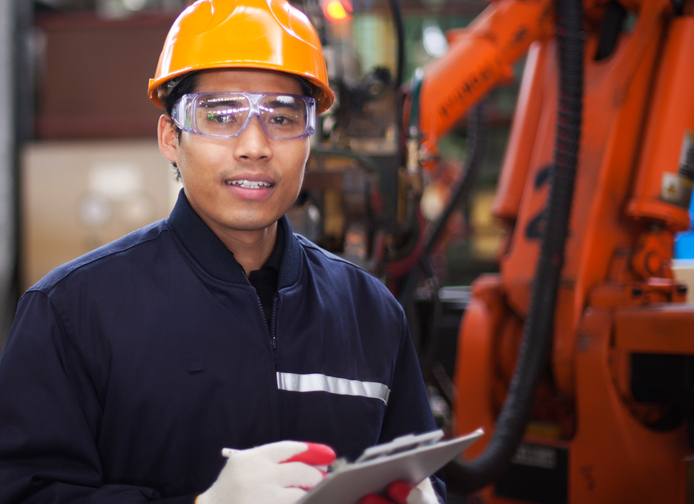.jpg) Global sales of industrial robots rose 16% in 20161, bringing the world market value up to $13.1 billion. Industrial robot sales are expected to grow at a faster rate in 2017, and sustain this rapid rate of growth through 2=020.
Global sales of industrial robots rose 16% in 20161, bringing the world market value up to $13.1 billion. Industrial robot sales are expected to grow at a faster rate in 2017, and sustain this rapid rate of growth through 2=020.
While industrial robot sales grow consistently, the dynamics of this growth are changing. For decades, the automotive industry was the major driver of growth in industrial robots. But in 2016, the electronics manufacturing industry accounted for nearly as many robot shipments as the automotive industry.
Remarkably, industrial robot sales jumped 41% in the electronics industry in 2016. As robots become smaller, cheaper and more precise, these manufacturers are increasingly adopting robots to combat the enormous demand for batteries, chips and displays.
How Does Industrial Robot Technology Impact Electronics Manufacturing?
Robots allow for miniaturization, increased throughput and reduced lead times for electronics manufacturers. Industrial robots are inherently more precise than humans, and have a major impact on assembly work that revolutionizes the rest of the electronics supply chain.
Industrial robots can place parts faster and more accurately, clearing the way not only for smaller electronics, but also faster production and higher throughput. This, in turn, allows manufacturers to optimize their supply chains by reducing lead times and by moving production closer to the product’s destination.
Industrial Robot Applications in Electronics Manufacturing
Industrial robots perform a wide variety of tasks in electronics manufacturing. Many of them involve advanced vision systems and sensors to accommodate for task variations and careful handling of delicate parts. Common applications include:
- Assembly
- Inspection and Testing
- Packing
- Dispensing
Robots are used to handle display screens, assemble connectors and other subassemblies, apply adhesives and sealants, perform inspections and tests, and even populate and coat circuit boards. They play a vital role from the start of production right up through to the point of delivery.
Industrial robots are increasingly important in the electronics manufacturing industry, enabling not only major supply chain changes but revolutionized production processes. 2016 saw incredible growth in industrial robotic sales in the electronics manufacturing industry, and adoption rates will likely increase.
Traditionally, the automotive industry has been the major force behind the growth of industrial robotics. But now, the electronics industry is on par with the automotive industry and adopting a wider range of robotic solutions than ever before.




